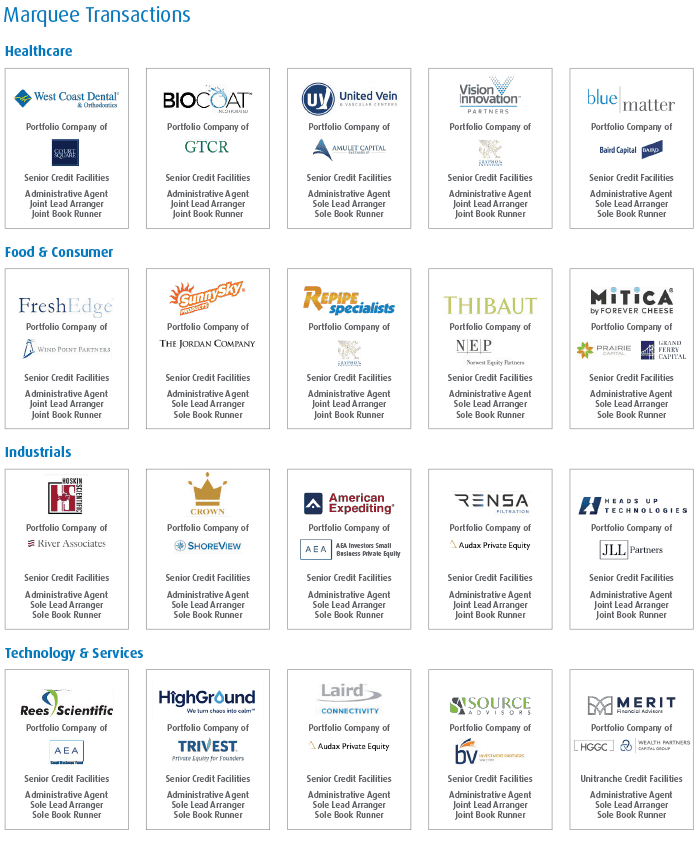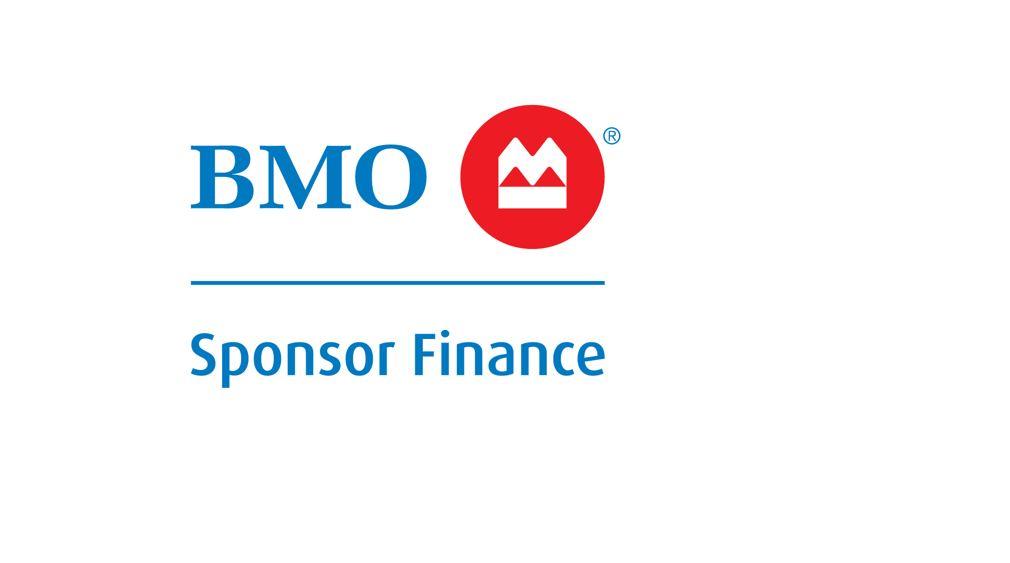Transaction Trends provides private equity sponsors and investors with middle-market transaction information and insights compiled by the BMO Sponsor Finance group — information that helps sponsors and investors better understand the current financing climate in the middle market. Click here to view the PDF report.
Differentiated Approach
Flexible Financing Products: First Lien Facilities, Junior Capital Facilities, Unitranche, Mezz, MultiCurrency & Cross-Border Loans, Equity Co-Investments
M&A Advisory
Asset Based Lending
Sponsor Fund Lending
Franchise Finance
Cash Management Derivative Products
Wealth Management
Investment & Corporate Banking
Tax Planning
High Yield
Equity Research
Treasury Management
Foreign Exchange


New Transaction Activity
Pricing Trends—All Transactions
As illustrated in the chart below, spreads on new transactions (inclusive of LBOs, refinances, add-ons) began to widen in Q2’22 as market disruptions earlier in the year began to have downstream impacts on the middle market.
Spreads continued to widen in Q3 and Q4 as growing macro economic headwinds and increased tightening by the Federal Reserve has pushed pricing upwards.
Existing platforms that have executed a transaction in the last 6 months (i.e. incremental for add-on) and previously had favorable rates (i.e. pre-2H 2022) have likely seen pricing adjusted (either within the MFN or full price reset) to support incremental debt raise needs.

Quarterly Transaction Activity—All Transactions
Overall, deal activity had stabilized from the flurry in calendar Q4’21, returning to more normalized levels in 1H’22.
In 2H’22 (particularly the later part) new deal activity began to slow due to growing dislocations in bid/ask valuations between buyers and sellers and disruptions in the financing markets. Reduced activity has continued into early 2023 despite M&A sale mandates and pitch activity remaining healthy.
While new platform investments have slowed of late, sponsors continue to remain active in pursuing add-ons for existing platforms as entrepreneurs continue to be sellers.

New Transaction Activity
Capital Structure Type—New LBOs
While single tranche structures have been favored in recent years given large lender holds and simplicity of execution, BMO has seen increased usage of senior/junior structures in 2H’22.
We attribute this to a number of factors including (i) pull back in unitranche lender appetite and hold capabilities (or lack thereof), (ii) spiking SOFR and spreads on senior floating rate debt has made fixed mezzanine paper more attractive, and (iii) mezzanine lenders increasing willingness to PIK a higher proportion of their yield, which benefits free cash flow.
Given reduced hold levels by lenders, BMO has witnessed sponsors reaching out to lenders much earlier in the process and clubbing more transactions than in prior years.
In 2H’22, BMO has also seen increased usage of debt advisors as well as more active outreach by sell-side bankers prior to launching a process.

Average Total Leverage Trends—New LBOs
Despite growing macroeconomic headwinds, closing leverage of new LBOs has largely remained in-line with previous quarters over the last ~12–18 months.
BMO has witnessed a flight to quality by both sponsors and lenders, where highly attractive and non-cyclical assets continue to command strong lender interest with similar leverage profiles as in past quarters.
Given the continued increase in SOFR / LIBOR and spreads, lenders have been focusing leverage indications on new transactions that maintain satisfactory interest and fixed charge coverage ratios, which is proving to be a leverage governor due to cash flow limitations.

Portfolio Trends
Average Total Leverage Trends (Portfolio)
BMO’s aggregate portfolio remains healthy, with quarterly leverage levels remaining within a relatively tight band from past quarters. Aggregate portfolio leverage levels remain similar to new LBO leverage levels given sponsors M&A strategies (resulting in leverage near incurrence tests).
In 2022, some common challenges that many borrowers had to deal with include spiking inflation (both material and labor costs), labor turnover, supply chain challenges (which many have eased), and end customer inventory de-stocking (particularly in 2H’22), while final sell through performance remained stable.

Quarterly LTM Average Revenue & EBITDA Trends
Despite significant inflationary pressures in 2022, borrowers have continued to demonstrate pricing power with the ability to pass through pricing increases and preserve profitability.
Borrower’s profitability has been impacted by inflationary pressures which, in most cases, has been temporary in nature, resulting in some borrowers needing to provide their customers with notice periods (~1-3 months is typical) before implementing pricing increases.

Fixed Charge Coverage Ratio Trends (Portfolio)
While aggregate fixed charge coverage ratios across the portfolio remain healthy, we have seen ratios compress modestly in 2H’22, due to the increase in SOFR/LIBOR and spreads.
We expect these ratios to tighten further as current interest rates remain steady or increase.
For borrowers with highly levered capital structures, CFOs are increasingly focused on the cash flow forecast/liquidity outlook versus concerns over tripping a leverage covenant.


